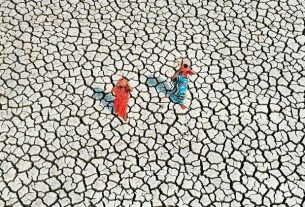In this blog post, Corli Coetsee discusses her team’s research ‘Soil organic carbon is buffered by grass inputs regardless of woody cover or fire frequency in an African savanna‘:
We are consistently being bombarded with messages on social media that planting trees is good, good because it can help save the Earth from climate change by increasing carbon storage. At the same time, we are faced with forest losses that continue unabated – 2022 recorded the highest global old growth forest loss ever. The demise of forest trees is accompanied by huge losses in carbon, one estimate puts the carbon dioxide released by forest losses in the tropics in 2022 equivalent to India’s annual fossil emissions. While large areas of forest are actively cleared in the tropics, additional forest cover (and carbon) is lost through increasingly intense wildfires fuelled by climate change in temperate zones. It makes sense then to plant trees and suppress fires, right? But what if ecosystems are supposed to be open, with few trees. Think about savanna areas like the Serengeti where grazing animals such as wildebeest thrive when grass is plentiful and trees scarce. Does it make sense to suppress fires and encourage trees to grow in these areas? How much carbon could be gained by doing this?
This is what our group set out to answer. At our study site in southern Kruger National Park, South Africa, we used an almost 70-year old fire experiment to study the drivers and consequences of changes in woody cover – woody cover includes both trees and shrubs – on carbon stored in the soil. This is an area that burns naturally every 3-4 years; fires are often started by lightning at the end of the dry season. Regardless of this relatively frequent fire return interval, and as in so many other traditionally open savannas, shrubs have been on the increase over the past half a century.


We surveyed four fire treatments, replicated at eight locations within the park, which included annual high-intensity burns, triennial high (dry season) and low-intensity (wet season) burns, as well as fire exclusion. Changes in woody cover were calculated over a period similar to the experiment’s duration using aerial photographs (1944-2018). Soils were analysed for organic carbon and carbon isotopes (which provide an indication of how much carbon in the soils originated from trees vs grass), under and away from tree canopies to isolate local and landscape-level effects of increases in woodiness on soil organic carbon. We were particularly interested in carbon stored in the soil because carbon stored above-ground in trees may be lost to disturbances such as fire and elephants.


A long-term fire experiment in the Kruger National Park has captured the effects of different burning regimes on vegetation; here is a plot that burns every year at the end of the dry season (a) and a plot where fire has been excluded for almost 70 years (b). Whether areas burn every year or almost never, grasses contribute significant amounts of carbon to soil in this savanna.
As expected, the largest increases in woody cover occurred with fire exclusion, but even plots that experienced fire every year had increases in woody cover. As was also expected, plots with higher increases in woody cover over time had higher soil organic carbon. However, the contributions of tree vs grasses to soil carbon were not what we expected. Grasses continued to contribute large amounts of carbon to soils, even under tree canopies in fire suppression plots. Tree-derived carbon increased with less frequent and intense fires, but it was only after excluding fire for almost 70 years that tree-derived carbon started to equal grass-derived carbon.
These results are joining a growing body of work that shows that fire suppression in savannas will not deliver huge returns on carbon as suggested by earlier work. It further reiterates the importance of a healthy grass layer to long-term carbon storage. The carbon gained by suppressing fires in savannas also needs to be weighed up against the losses in biodiversity that are associated with losing plant and animal species adapted to open, sunny systems. Rather than fire suppression and tree planting in savanna, other nature-based solutions such as better grazing- and fire management, including frequent low intensity fire, should be invested in.
Read the full article online: ‘Soil organic carbon is buffered by grass inputs regardless of woody cover or fire frequency in an African savanna‘

